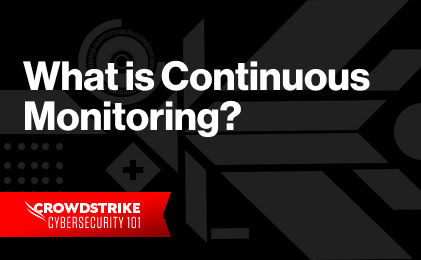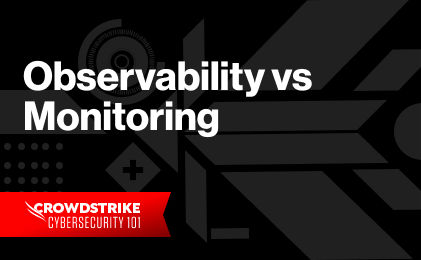Transform SOC with Next-Gen SIEM
Transform SOC with Next-Gen SIEM
What Is Real User Monitoring (RUM)?
In modern business, delivering the best possible customer experience is critical to success. In the case of digital products, this means optimizing applications for intuitive user access to functionality and lightning-fast reaction times. Attaining this high standard requires granular knowledge of how your users interact with the applications. For this, you need real user monitoring (RUM).
Real User Monitoring (RUM) monitors application performance by capturing every user interaction on a website or mobile application. As organizations better understand how users interact with their applications, their development teams can focus on the interaction sequences that bring the maximum value to the users.
In this article, we’ll learn about RUM and why businesses need it. We’ll consider its benefits and how you can choose a RUM solution for your business.
Where Real User Monitoring Comes into Play
RUM is about understanding how users interact with a digital product by capturing every action they take. RUM uses web monitoring services to collect details about the availability, error scenarios, and responsiveness of your application as a form of passive continuous monitoring.
For example, let’s consider the homepage of an ecommerce website. On this page, a user has multiple options. They can click on one of the recommendation banners or preorder sales. They can search for products directly in the top bar. They can also select a category and browse through the products available in that category.
The sequence of actions taken by a user — resulting in completing a new purchase or moving away from the website — is information that developers can use to improve website performance.
RUM also tracks details like page load times, the response time of queries or error messages that the user encountered while navigating the website. This helps developers understand the product areas that require improvement to keep users engaged.
Why Do You Need Real User Monitoring?
An application goes through many stages of testing before it is deployed. What is it that RUM provides that none of the other testing and performance monitoring tools can? The answer is: the real-world user’s perspective. All other testing and performance monitoring strategies are based on the organization’s understanding of how users will interact with the application. Such assumptions and simulations may have little value once real users interact with the application.
To optimize the application further, developers require knowledge of exactly how actual users interact with it. This is what RUM brings to the table.
Another reason RUM is helpful is the vast number of mobile devices and browser versions the applications will face once it is in users' hands. The quality assurance process during development will not cover every device and browser version available. When real users use the application, issues triggered by specific browser variations or mobile devices will arise. Developers do not have any way of predicting all of these issues, However, RUM brings such issues to light.
Most performance monitoring initiatives that are executed during development focus on backend APIs and services. RUM exposes frontend issues in applications.
RUM provides evidence to support investment decisions for further application enhancements. It provides aggregated reports that enable product managers to identify areas that create the highest impact on business outcomes.
RUM also helps business teams to verify the success or failure of deployed features. For example, a product manager might authorize a development effort to improve the checkout section of an ecommerce website, hoping that it will reduce cart abandonment. RUM can help verify whether the change has impacted the abandonment rate at that point in the user journey.
Defining target values for key performance indicators (KPIs) for an application is a difficult task. For example, let's consider web application response time. With enough investment in hardware and software, it is possible to achieve lightning-fast response times. However, this may not be the right financial decision. Achieving a balance of investment and acceptable response times is the key to achieving profits. Without RUM, there is no way to arrive at the sweet spot of acceptable response time and palatable cost that actually reduces defection or abandonment to ideal levels.
How Does Real User Monitoring Work?
RUM involves the following three key aspects:
- Data capture
- Data processing
- Dashboards and reporting
Data capturing works through JavaScript snippets embedded in the frontend application and mobile application. These snippets send data silently and continuously without affecting the user experience. They capture data regarding several aspects including:
- User device
- Browser version
- Current state of the application
- Actions taken by the user
- Responses from the website
- Final state of the application
- Unique user identification
The code snippet sends captured data to the backend platform. The platform performs data processing, mapping the data to user sessions to create a trail of activity for individual user sessions. This process is called sessionization. The platform then derives metrics that are connected to business outcomes. Metrics typically include trace times of various stages of the user journey, heat maps of user interaction areas in the UI, bounce rates, load times and more.
The third component of RUM is the dashboard. The dashboard deals with aggregated data and metrics calculated by the processing platform. This helps developers to focus on the collective issues happening in the application rather than individual data points about how users interact with the application.
Real User Monitoring vs Synthetic Monitoring
RUM is different from synthetic monitoring. Synthetic monitoring relies on simulated user input. RUM is a passive monitoring strategy, while synthetic monitoring is an active one. RUM detects issues at the page level and network level. Synthetic monitoring is a great mechanism for general performance benchmarking, but it does not yield the same types of real-user insights as RUM.
The Challenges of Real User Monitoring
RUM provides critical data elements that aid budgeting decisions, product enhancement, and customer retention strategies. Nonetheless, RUM is not a one-size-fits-all solution.
RUM requires significant traffic for monitoring to ensure everything works as intended. If a website or mobile application has very little traffic, then it is more likely that the conclusions made through RUM aren’t statistically significant. Therefore, RUM requires a minimum critical mass to be effective. It is intended for production environments where the traffic is highest.
Setting up RUM independently requires sophisticated hardware and software capability. This is why software-as-a-service (SaaS) products that offer RUM are often the preferred implementation option. However, using a RUM SaaS service requires sending your customer data to a third-party organization, and your organization will need to consider this in light of its security posture.
Since RUM monitors every single action taken by users, it can collect a lot of irrelevant data as well. Extracting useful information from this requires expert analytics teams that have an eye for the organization’s business success as well as the technical details of the application.
RUM does not provide any information on actual server performance, but rather is meant to be a tool for analyzing frontend issues.
Choosing a Real User Monitoring Solution
The RUM market comprises a number of reliable solutions offered on a SaaS model. At a high level, businesses should consider the following factors when choosing a RUM solution.
Ease of Implementation and Configuration
Most solutions come with JavaScript snippets that can be embedded in the frontend code. Developers then need to configure the data points that need to be captured. You should consider how easily you can integrate a RUM solution into your current tech stack.
Effectiveness of Dashboards
Built-in metrics and reports in dashboards enable developers to focus on the real issues without wading through an ocean of collected data. The dashboards should also support drill-downs that provide a comprehensive view of user sessions and user journeys.
Support for Mobile and Web Applications
Depending on financial factors and the area of focus, businesses can choose RUM solutions that support mobile, web or both. Forward-looking organizations typically seek support for both, knowing that their applications will eventually include mobile if they don’t already.
Customer Support
RUM solutions are primarily SaaS-based. Like any SaaS product, a dependable and robust support system goes a long way in ensuring peace of mind. The quality of this service should be a key factor when considering a solution.
Discover the world’s leading AI-native platform for next-gen SIEM and log management
Elevate your cybersecurity with the CrowdStrike Falcon® platform, the premier AI-native platform for SIEM and log management. Experience security logging at a petabyte scale, choosing between cloud-native or self-hosted deployment options. Log your data with a powerful, index-free architecture, without bottlenecks, allowing threat hunting with over 1 PB of data ingestion per day. Ensure real-time search capabilities to outpace adversaries, achieving sub-second latency for complex queries. Benefit from 360-degree visibility, consolidating data to break down silos and enabling security, IT, and DevOps teams to hunt threats, monitor performance, and ensure compliance seamlessly across 3 billion events in less than 1 second.







